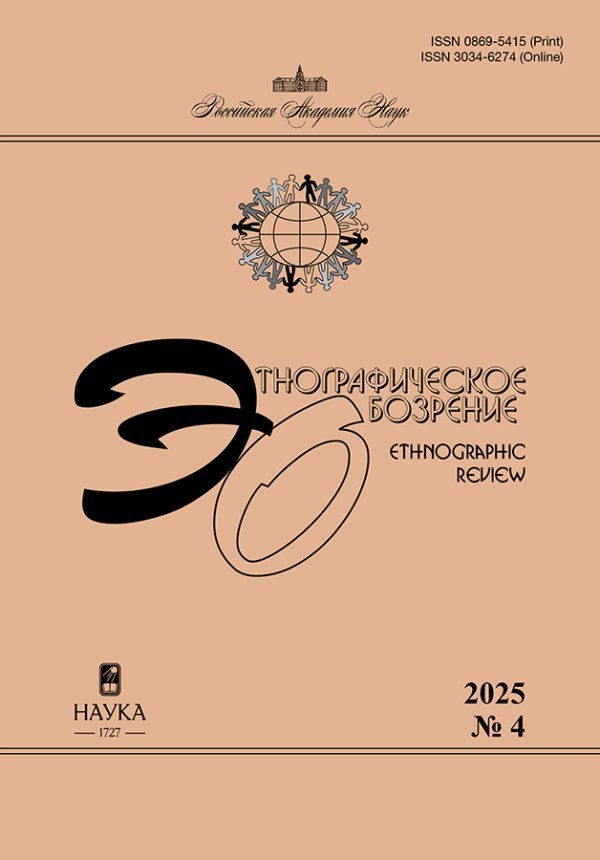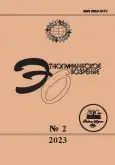Ancestors against order: two models of Immortal regiment
- Authors: Kirziuk A.A1, Arkhipova A.S1,2, Gavrilova M.V1, Kozlova I.V1, Belyanin S.V1
-
Affiliations:
- Russian Presidential Academy of National Economy and Public Administration
- �cole des hautes �tudes en sciences sociales
- Issue: No 2 (2023)
- Pages: 153-175
- Section: Articles
- URL: https://rjsvd.com/0869-5415/article/view/672268
- DOI: https://doi.org/10.31857/S0869541523020082
- EDN: https://elibrary.ru/RBYWNC
- ID: 672268
Cite item
Abstract
About the authors
A. A Kirziuk
Russian Presidential Academy of National Economy and Public Administration
Email: kirzyuk@gmail.com
Moscow, Russia
A. S Arkhipova
Russian Presidential Academy of National Economy and Public Administration;�cole des hautes �tudes en sciences sociales
Email: alexandraarkhipova@gmail.com
Moscow, Russia
M. V Gavrilova
Russian Presidential Academy of National Economy and Public Administration
Email: mariavl.gavrilova@gmail.com
Moscow, Russia
I. V Kozlova
Russian Presidential Academy of National Economy and Public Administration
Email: matira@dobre.ru
Moscow, Russia
S. V Belyanin
Russian Presidential Academy of National Economy and Public Administration
Email: robispre10@gmail.com
Moscow, Russia
References
- Арон Р. Этапы развития социологической мысли. М.: Прогресс - Политика, 1992.
- Архипенко Н.А. Городское кладбище как ритуальное пространство празднования Дня Победы // Русская старина. 2015. Т. 16 (4). С. 251-257.
- Габович М. Памятник и праздник: этнография Дня Победы // Неприкосновенный запас. 2015. № 101 (3) С. 93-202.
- Гофман И. Анализ фреймов. Эссе об организации повседневного опыта. М.: Институт социологии РАН, 2004.
- Дюркгейм Э. Элементарные формы религиозной жизни. Тотемическая система в Австралии. М.: Элементарные формы, 2018.
- Королева С., Колегова О. Мемориал-кенотаф и часовенный праздник: сельские коммеморативные ритуалы Дня Победы // Фольклор и антропология города. 2019. Т. 2 (1-2). С. 256-288.
- Курилла И. "Бессмертный полк": "праздник со слезами на глазах", парад мертвецов или массовый протест? Споры о смысле и перспективах нового праздничного ритуала // Контрапункт. 2018. № 12. С. 1-11.
- Левкиевская Е.Е. Мертвых культ // Славянские древности. Этнолингвистический словарь. Т. 3 / Отв. ред. Н.И. Толстой. М.: ИСл РАН, 2004. С. 227-231.
- Майофис М.Л. Журавли как символ памяти о войне в СССР середины 1950-1960-х гг.: первые попытки проработки травмы // СССР во Второй мировой войне. Оккупация. Холокост. Сталинизм / Науч. ред. О. Будницкого и Л. Новиковой. М.: РОССПЭН, 2014. С. 361-391.
- Митрофанова А. Социокультурные истоки "Бессмертного полка" в контексте ритуалов коммеморации // Победа, которая изменила мир (войны, революции, реформы в судьбах России) / Отв. ред. О.М. Михайленок. М.: ФНИСЦ РАН, 2020. С. 291-306.
- Захарова А.Л. и др. (сост.) "С четверга на пятницу…": рассказы о сновидениях в фольклоре Русского Севера. М.: Редкая птица, 2020.
- Плеханов А. Гражданская солидарность, протест-праздник и поминовение усопших: "Бессмертный полк" в Киеве в 2019 г. // Символические аспекты политики памяти в современной России и Восточной Европе / Под ред. В.В. Лапина, А.И. Миллера. СПб.: Изд-во Европейского ун-та в Санкт-Петербурге, 2021. С. 249-267.
- Титков А. Новые практики Дня Победы: макросоциологическое объяснение // Фольклор и антропология города. 2019. Т. 2 (1-2). С. 206-229.
- Уорнер У. Живые и мертвые. СПб.: Университетская книга, 2000.
- Эделе М. Советская культура Победы // Неприкосновенный запас. 2020. № 3 (131). С. 47-69.
- Эппле Н. Неудобное прошлое: память о государственных преступлениях в России и других странах. М.: НЛО, 2020.
- Fedor J. Memory, Kinship, and the Mobilization of the Dead: The Russian State and the "Immortal Regiment" Movement // War and Memory in Russia, Ukraine and Belarus / Eds. J. Fedor, M. Kangaspuro, J. Lassila, T. Zhurzhenko. Cham: Springer, 2017. P. 307-344.
- Gabowitsch M. Are Copycats Subversive? Strategy-31, the Russian Runs, the Immortal Regiment, and the Transformative Potential of Non-Hierarchical Movements // Problems of Post-Communism. 2018. Vol. 65 (5). P. 297-314. https://doi.org/10.1080/10758216.2016.1250604
- Gaufman E. The Post-Trauma of the Great Patriotic War in Russia // Studies in Russian, Eurasian and Central European New Media (digitalicons.org). 2017. No. 18. P. 33-44.
- Warner E., Adonyeva S. We Remember, We Love, We Grieve: Mortuary and Memorial Practice in Contemporary Russia. Madison: The University of Wisconsin Press, 2021.
Supplementary files











